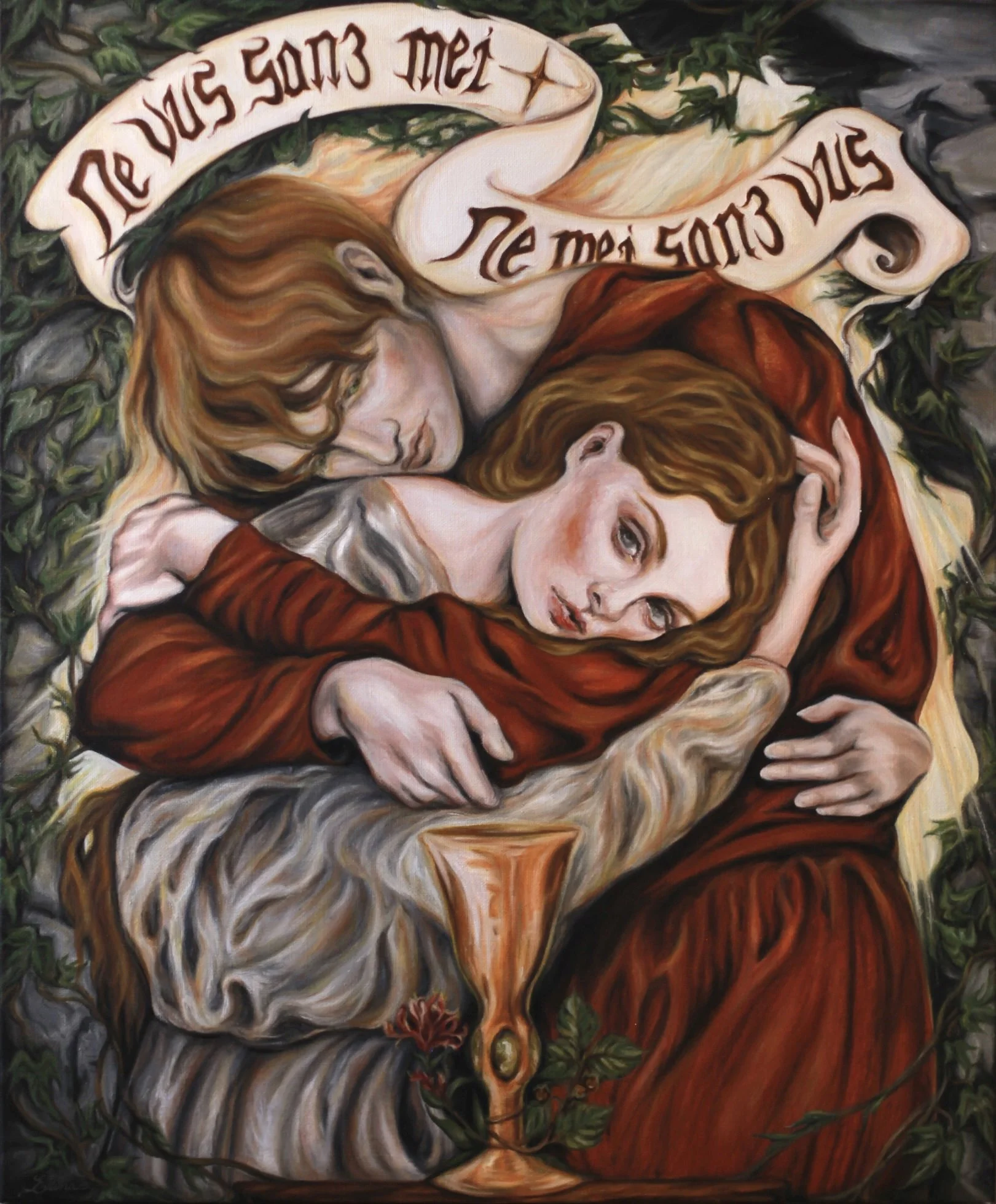Ivy on our graves, oil on linen canvas, 73x84cm framed, 2023. ©Elina Siddal
Once bound, they can no longer be separated or both would perish. That’s what Medieval poet Marie de France tells us in her Lai du Chevefoil, comparing star-crossed lovers Tristan and Isolde to the honeysuckle and hazel intertwining.
The diagonal lines created by the position of the arms and the scroll—bearing the most emblematic line of the lai, "Never you without me, me without you" in its original old French—suggest the shape of a heart whose tip is the central chalice, starting point of the love story. Moreover, the encircling stones were based on the ruins of Castle Roche, said to resemble Béroul's description of the lovers’ refuge whereas the binding heart-shaped leaves, following the floral symbolism of the courtly love tradition, reference the ivy shoot rumoured to have grown from the lovers’ graves to reunite them after being buried apart.
Proving once again that their spiritual connection overcame physical constraints, Tristan and Isolde are here tenderly depicted in a fusion of heart and soul, united beyond life and death.
“Ensemble poient bien durer
Mès ki puis les volt désevrer,
Li codres muert hastivement,
E Chevrefoil ensemblement ;
Bele amie si est de nus
Ne vus sanz mei, ne mei sanz vus”
Marie de France, Chevrefoil, 1160-1180





